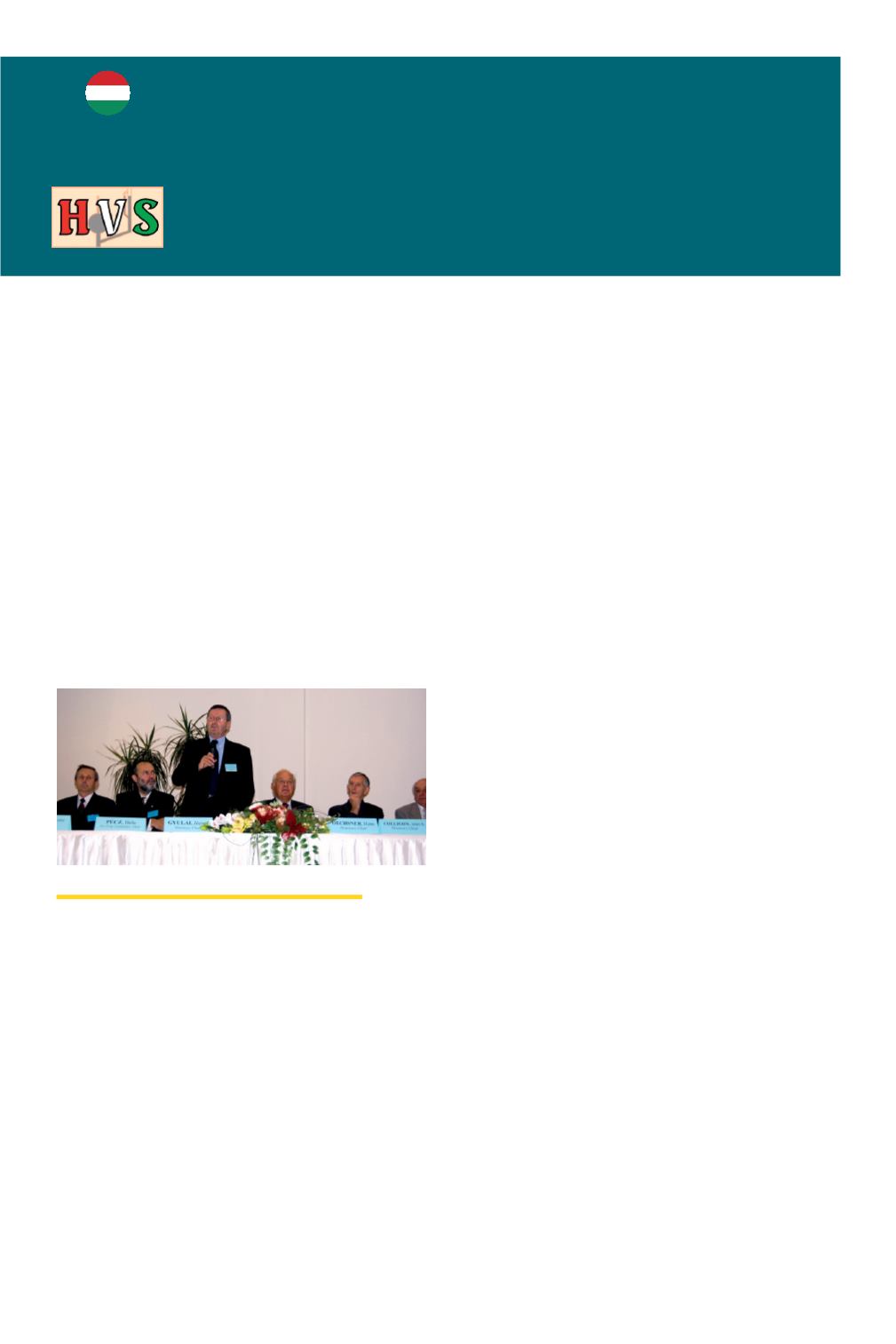

110
Several vacuum experts became individual
members of IOVST and a delegation participated
in the Namur Conference in 1958. After its reor
ganization into the IUVSTA as an international
body of national committees in 1959, Hungary
became a member and in 1962 the Hungarian
National Committee of IUVSTA was established
by the Section of Engineering Sciences of the
Hungarian Academy of Sciences. Prof. G. Szigeti,
first secretary and later chairman of the Hungarian
National Committee, was for many years the
most ardent promoter of organized vacuum
activities in Hungary. He also took a lively part
in the corroboration of the international profile
of IUVSTA. In February 2008 our committee
changed its name to Hungarian Vacuum Society
(HVS) to meet better the rules of IUVSTA –
members, organization and activity unchanged
(https://www.kfki.hu/elftvakuum/iuvsta/hvs.htm).
The sister-organization of HVS in Hungary is the
Division of Vacuum Physics, Technology and
Applications of Roland Eötvös Physical Society
(VPTA of REPS)
(https://www.kfki.hu/elftvakuum).
HVS is responsible for the IUVSTA-related affairs
of the Hungarian vacuum-related scientists and
engineers, and VPTA coordinates all other affairs
and organizes the Joint Vacuum Conferences.
Prof. J. Antal, Chairman of the late Hungarian
National Committee of IUVSTA became president-
elect of IUVSTA in 1980 and acted as president
of IUVSTA in the triennium 1983-1986.
The HVS, having had at first about a dozen
members, now has a strength of 48. It is
composed of vacuum science and technology
experts associated with industry, academic
From the first years of the 20
th
century there has been a strong interest in vacuum science
and technology in Hungary, due mainly to the use of vacuum by Tungsram Ltd. Some of its
early achievements include the lamp with tungsten filament in 1903 and the lamp filled with
krypton in 1935. An independent vacuum society has not been established in Hungary but
vacuum scientists have found a home within the Mathematical and Physical Society. After
World War II when scientific life was reorganized the structure remained similar. Vacuum and
Thin Film Sections have been established in the Roland Eötvös Physical Society (REPS), in the
Scientific Society forTelecommunication and in the Society for Optics, Acoustics and Cinema
Techniques. Lectures and discussions were organized by these Sections. The cooperation
of these sections was prompted by the Coordinating Committee for Vacuum and Thin Film
Techniques of the Association of Scientific andTechnical Societies in Budapest which was the
umbrella organization of the societies. Hungarian vacuum scientists contributed regularly to
international vacuum periodicals and conferences.
Opening session of JVC-12/EVC-10/AMDVG-7
(Balatonfüred, 2008). From left to right: S. Bohátka, Chair
of the conference, President of VPTA of REPS 2003-
2011, Secretary of HVS 1996-2011; B. Pécz, Chair of the
International Programme Committee, President of VPTA of
REPS 2012- ; J. Gyulai, President of HVS 1991-, Honorary
Chair of the conference; H. Oechsner and J. S. Colligon,
Honorary Chairs of the conference; P. B. Barna, Chair of
the International Organizing Committee.
THE HUNGARIAN VACUUM SOCIETY
(Magyar Vákuumtársaság)
Original (1986) by late Iván Péter Valkó, updated (2001)
by György Radnóczi and (2017) by László Kövér
www.kfki.hu/elftvakuum/hvs.html








